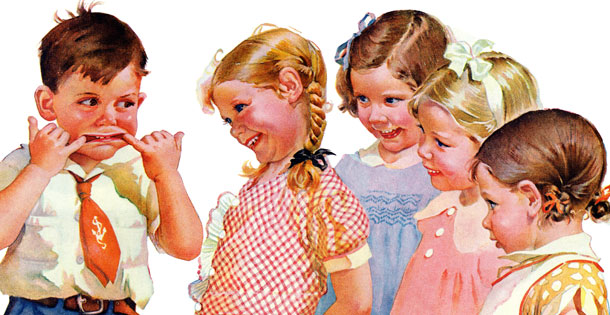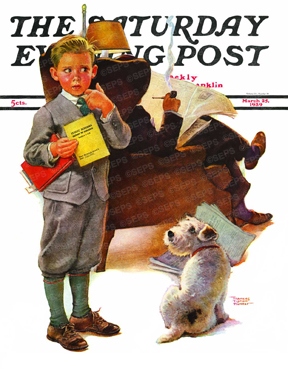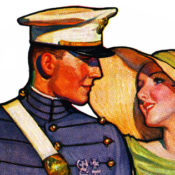Born in Howard, Pennsylvania, in 1896, Frances Tipton Hunter’s early years began in quiet, rural America. At the age of six, she suffered the tragedy of losing a parent, her mother. At this young age, she moved to Williamsport, Pennsylvania, to live with her aunt and uncle. Hunter longed to remember the happiness of her earliest childhood memories, and this remained a constant theme throughout her life’s work.
Hunter began developing her abilities at Williamsport High School. After graduating in 1914, she moved to Philadelphia to further her career in art and illustration. She attended many art schools and institutions, including the Philadelphia Museum of Industrial Discipline, The Pennsylvania Academy of Fine Arts, and the Fleisher Art Memorial, and graduated from each institution with honors. At the end of her studies in Philadelphia, she received an art scholarship that allowed her to move to New York City. There she began her career illustrating fashion for department-store children’s clothing lines.
Covers by Frances Tipton Hunter
Birthday Kiss
Francis Tipton Hunter
March 5, 1938
Report Card
Francis Tipton Hunter
March 25, 1939
Growing Boy
Francis Tipton Hunter
September 16, 1939
Hunter quickly rose to fame and recognition in the art world, becoming one of the most prominent female illustrators of the 20th century. Her early work captured depictions of children and pets, popular subjects of the 1920s and ’30s. Prior to her first commission for The Saturday Evening Post, Hunter’s work lined the covers and pages of magazines and periodicals such as Women’s Home Companion, Collier’s, Liberty, Good Housekeeping, and Ladies’ Home Journal.
A wide variety of her work was published as advertisements, puzzles, paper dolls, and calendar art. Her paper dolls, featured in Frances Tipton Hunter’s Paper Dolls and The Frances Tipton Hunter Picture Book, grew into a popular series later taken up by the Whitman Publishing Company of Racine, Wisconsin.

Francis Tipton Hunter
June 6, 1936
Her first Post cover, No Money for Her Soda, published on June 6, 1936, was a phenomenal success. It depicted a toddler couple on a date and out of cash. The image of adult life reflected in an innocent childhood scene secured more commissions for Hunter throughout the following decade.
Much like Norman Rockwell, Hunter preferred depicting an idealized American childhood filled with innocence. Bright eyes, pale skin, and plump, rosy cheeks are typical of her painted children playing games. In all, Hunter completed 18 covers for The Saturday Evening Post from the mid-1930s to the 1940s. As with many artists and illustrators of that era, her work on the cover of the Post brought her national fame.
Become a Saturday Evening Post member and enjoy unlimited access. Subscribe now







Comments
Magazine subscribers/members can see all of her art in our art archive: https://www.saturdayeveningpost.com/artworks/?artwork-artist=frances-tipton-hunter&artwork-year=&artwork-theme=
ALL covers by Frances Tipton Hunter – why no complete listing??? All I ever get is her biography page, but no pages specific to her cover art.